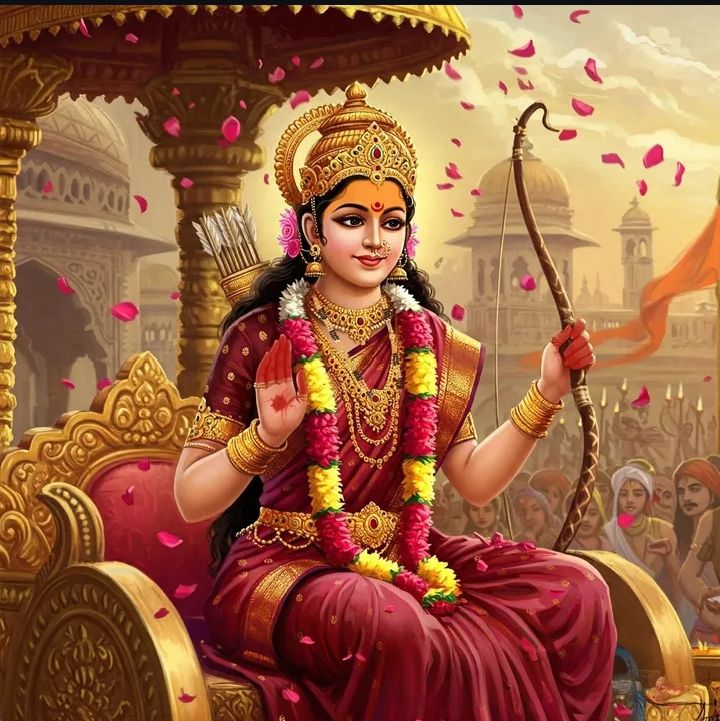8 Inspiring Facts About Goddess Sita That Will Uplift Your Spirit
Goddess Sita, revered as the ideal woman, devoted wife, and symbol of virtue, holds a central place in Hindu mythology and culture. Known for her unwavering devotion, patience, and strength, Sita continues to inspire millions worldwide. This article explores her history, fascinating facts, timeline, significance, FAQs, daily life impact, and societal importance in a human-friendly, detailed, and inspiring manner.
Sita
| Characteristics : | Ideal woman, Virtuous |
| Other Names : | Janaki, Maithili, Ramaa, Vaidehi |
| Principal Scriptures : | The Ramayana |
| Consort : | Lord Rama |
| Sita Gayatri Mantra : | Aum Janaknandiniye Vidmahe Bhumijayai Dheemahi Tanno Sita Prachodayat |
History of Goddess Sita
Goddess Sita’s story is primarily narrated in the Ramayana, one of India’s most revered epics:
Birth: Sita is believed to have emerged from the earth itself, discovered by King Janaka while plowing the fields, symbolizing purity, virtue, and divine origin.
Marriage to Lord Rama: She married Lord Rama, the prince of Ayodhya, after successfully breaking the divine bow of Lord Shiva in a contest arranged by her father.
Life in Exile: During Rama’s exile, Sita demonstrated resilience, courage, and loyalty, living in the forest with dignity and facing many challenges.
Abduction by Ravana: Her abduction by the demon king Ravana and subsequent rescue by Rama highlight her innate strength and faith in righteousness.
Return to Ayodhya: Upon returning, Sita faced social scrutiny and trials, showcasing the complexity of moral, social, and spiritual expectations.
Symbol of Purity and Sacrifice: Sita embodies unwavering virtue, moral strength, and selflessness, inspiring devotion and reverence.
Interesting Facts About Goddess Sita
Embodiment of Virtue: Sita symbolizes purity, dedication, and moral integrity, inspiring personal and societal values.
Devoted Wife: Her relationship with Rama represents loyalty, love, and mutual respect in marital life.
Strength in Adversity: Sita faced trials like abduction, exile, and public scrutiny with courage and grace.
Role as a Mother: Mother to Lava and Kusha, Sita embodies nurturing, guidance, and teaching virtues to her children.
Cultural Influence: Stories of Sita influence festivals, theater, art, and literature across India and Southeast Asia.
Symbol of Patience: She teaches perseverance, calmness, and inner strength during trials and tribulations.
Spiritual Significance: Sita is revered as an incarnation of Lakshmi, representing prosperity, devotion, and divine energy.
Role Model for Women: Sita inspires women to balance personal integrity, devotion, and courage in everyday life.
Timeline of Sita’s Life and Worship
Treta Yuga (Mythological Era): Sita’s birth, marriage to Rama, exile, abduction, and return are narrated in the Ramayana.
Ancient Temples (c. 300–1000 CE): Temples in Janakpur, Chitrakoot, and Sitamarhi honor her life and virtues.
Medieval Literature (c. 10th–18th Century): Poetic works and retellings celebrate her story in Tulsidas’ Ramcharitmanas and regional folklore.
Modern Era: Festivals like Diwali (return of Rama and Sita), Vivaha Panchami (marriage celebration), and Ram Navami commemorate her significance.
Significance of Goddess Sita
Sita holds moral, spiritual, and societal significance:
Spiritual Symbol: Embodies devotion, humility, and divine grace.
Moral Guide: Inspires ethical living, patience, and resilience during challenges.
Cultural Influence: Integral to festivals, art, literature, and folk traditions, preserving Indian heritage.
Empowerment through Virtue: Demonstrates that strength lies in dignity, patience, and moral courage.
Family Values: Sita’s life guides marital fidelity, maternal care, and familial harmony.
Role Model: Encourages women and men alike to embody integrity, devotion, and courage.
Societal Harmony: Her story reinforces justice, righteousness, and ethical behavior in society.
FAQs About Goddess Sita
Q1: Who is Goddess Sita?
A1: Sita is the divine consort of Lord Rama, a symbol of virtue, devotion, and resilience, and an incarnation of Goddess Lakshmi.
Q2: What is Sita’s significance in Hinduism?
A2: Sita represents moral integrity, patience, devotion, and strength, serving as a role model for personal and societal conduct.
Q3: Which festivals celebrate Sita?
A3: Vivaha Panchami, Diwali, Ram Navami, and Dussehra honor her marriage, return, and life events.
Q4: How does Sita inspire daily life?
A4: She encourages patience, moral courage, devotion, and resilience in personal, family, and societal contexts.
Q5: How is Sita worshiped?
A5: Through temple visits, prayers, recitation of Ramayana, and rituals during festivals, seeking blessings for virtue, family harmony, and spiritual growth.
Impact on Daily Life
Goddess Sita’s influence on daily life is profound and practical:
Emotional Strength: Encourages calmness, patience, and resilience during challenges.
Spiritual Growth: Inspires devotion, mindfulness, and ethical living.
Family Values: Guides marital harmony, maternal care, and ethical parenting.
Cultural Engagement: Promotes participation in festivals, recitations, and artistic expressions.
Social Morality: Reinforces justice, integrity, and righteous conduct in communities.
Observance and Wishing
Vivaha Panchami: Celebrates Sita’s divine marriage to Rama with rituals and prayers for marital bliss and family harmony.
Diwali: Marks Sita’s return to Ayodhya, emphasizing joy, prosperity, and righteousness.
Ram Navami: Observes her association with Rama and her virtues of devotion and courage.
Daily Devotion: Reciting her stories or meditating on her qualities cultivates patience, integrity, and devotion.
Wishing: People seek her blessings for family harmony, personal strength, and spiritual guidance.
Community Participation: Festivals unite communities in celebration, cultural activities, and moral reflection.
Conclusion: Why Goddess Sita Matters
Goddess Sita is more than a mythological figure; she represents virtue, resilience, devotion, and moral courage. Her life provides timeless lessons on balancing personal integrity, family duties, and spiritual growth. On a societal level, Sita’s worship fosters ethical behavior, cultural preservation, and community unity.
By embracing the virtues of Sita, individuals cultivate patience, courage, devotion, and moral clarity, while society benefits from stronger family bonds, ethical guidance, and cultural continuity. Sita remains a beacon of light, inspiring generations to pursue righteousness, resilience, and devotion.
Quick Recap: 8 Inspiring Facts About Goddess Sita
Embodiment of virtue, patience, and moral integrity.
Devoted wife to Lord Rama, symbolizing love and loyalty.
Demonstrated strength during exile, abduction, and trials.
Mother to Lava and Kusha, teaching values and guidance.
Integral to cultural and literary traditions across India.
Symbol of perseverance, resilience, and inner strength.
Spiritual significance as an incarnation of Lakshmi.
Role model for women and men, inspiring ethical living and courage.








